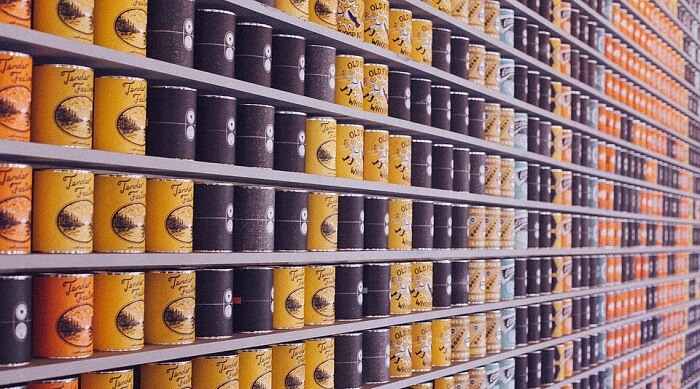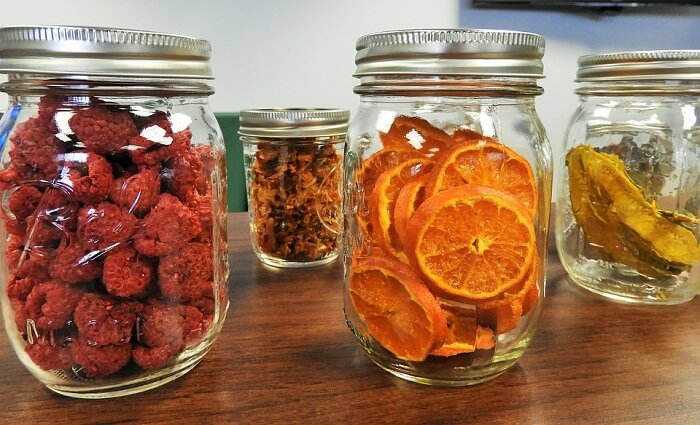What is food microbiology? What are the uses and applications of food microbiology in daily life? Examples of Food Microbiology.
Food Microbiology
In addition to producing food, there is also storage. In their natural state, all the organic materials we eat are perishable. After a while, their smell, taste and appearance deteriorate. Even when they are not completely unappetizing, food loses its nutritional value as vitamins are reduced by strong light, air or water The first thing in food preservation is to prevent yeast, molds, bacteria and insects from eating them before us. . Bacteria prefer meat, dairy products and vegetables with low acidity. When allowed to multiply, they form acid and other waste products that decompose food. Some bacteria invade people’s digestive tracts or release harmful toxins that cause acute food poisoning.
Humanity has been working to prevent food from spoiling since the first day it cooked meat on fire; The processes of salting, drying and pickling the incense have been done for thousands of years. But the science of food preservation made great progress, originally in the 19th century, with the discovery of processes such as pasteurization.

Source: pixabay.com
Frozen food
Bacteria and molds that invade and digest fresh food very quickly love warm, humid conditions. Cooling slows their reproduction. Freezing does even better: It kills most microorganisms; it puts the rest into a kind of temporary death. Food that should be eaten within a few days or a week will last for months in the ice.
Most organic matter contains large amounts of water. When peas or hamburgers are frozen, the water inside turns into ice crystals. It sounds simple, but people living in cold climates take advantage of the cold weather to store game or fish outside and keep it fresh longer. In other countries, home-freezing of food only became commonplace in the mid-20th century, with the introduction of freeze-frozen foods—and with them the first home freezers.
Even today, the freezing process with shock has important advantages compared to the freezing process made at home. First, the sub-zero temperature applied in this method is more lethal to microorganisms than the temperatures attainable in most home freezers.
The latter freezes the air very quickly—within a few minutes—by circling the air around the food with the aspirator. When food is frozen slowly, large ice crystals form, which can distort the open cells and explode. The result is a mushy consistency and possibly a loss of color and taste.
Many fruits and vegetables are quickly heated by boiling or steaming before being frozen. Thus, the food; The activity of enzymes that can ripen is stopped.

Source: pixabay.com
Bottled and Canned Food
The most important factor in canning and bottling is the container itself. The sterilized airtight container does not allow the entry of microorganisms that will eat the contents. The contents of the container remain edible for up to five years.
First, the material undergoes a preservation process, which usually consists of cooking at high temperatures; Bacteria like extreme heat less than cold. Sometimes acidic ingredients are added as preservatives.
Then the prepared food is sealed in the container and sterilized by heat, which is a sudden raid on the remaining microorganisms. The temperature required for sterilization varies with the food. Traditional home canning recipes are mostly for highly acidic pickled foods and fruity foods that can be safely sterilized by boiling alone. But in order to kill dangerous microorganisms such as bacteria that cause food poisoning, pressure cooking is used because the meat with low acid content needs to be very hot -around 102°C.
If canned foods go bad (which they rarely go bad), it is necessarily because bacteria seep into the food during preparation or putting it in the container.
Canning is an ancient form of food preservation, the invention of which is attributed to the Parisian confectioner Nicolas Appert. After more than 10 years of experimentation, Appert published “The Art of Preserving Animal Foods and Vegetables” in 1810. Because chemistry at the time was a science in its infancy and knowledge of bacteriology was limited, Appert had progressed largely by trial and error.

Source: pixabay.com
Freeze Dried Food
Bacteria and molds that cause food to deteriorate or become toxic cannot survive without water. And this weak point is exploited to keep food edible for a long time.
In freeze drying, the food or beverage is first exposed to temperature values between -16°C and -43°C, and the water it contains is converted into ice and the microbes are confused. Next, the food is heated in a low-pressure zone, in a process called sublimation; in this process, solid ice molecules are forced to decompose into gaseous state, bypassing the liquid phase. Water vapor is condensed and pumped out of the chamber, the process can take hours
What remains is the undamaged structure of the food, where there are air-filled pores in places where there was water before. It is too dry for microorganisms to live. Food is vacuum packed to prevent moisture from the air
Even after 30 years, all that needs to be done is to add water and mix.
Freeze drying is the underlying technology for instant coffee, dried soup mixes, instant cake mixes, powdered beverages and snack frozen fruit Most foods can be freeze dried, even if they need to be chopped into small pieces.
Dehydrated freeze-dried foods take up little space and are extremely light, making them particularly useful for soldiers on the front and campers on long hikes.
Nutrition in Space
NASA had done extensive research on foods suitable for spaceflight before landing a man on the Moon with the Apollo project of the 1960s, and one of the results was freeze-dried ice cream. NASA had given the freezing task to the Whirlpool Corporation. But can something smooth and not cold be called ice cream? Unlike other freeze-dried foods, the astronauts ate the ice cream crispy and dry without adding water. The invention only went into space once, but after that it had an active life as a new product.